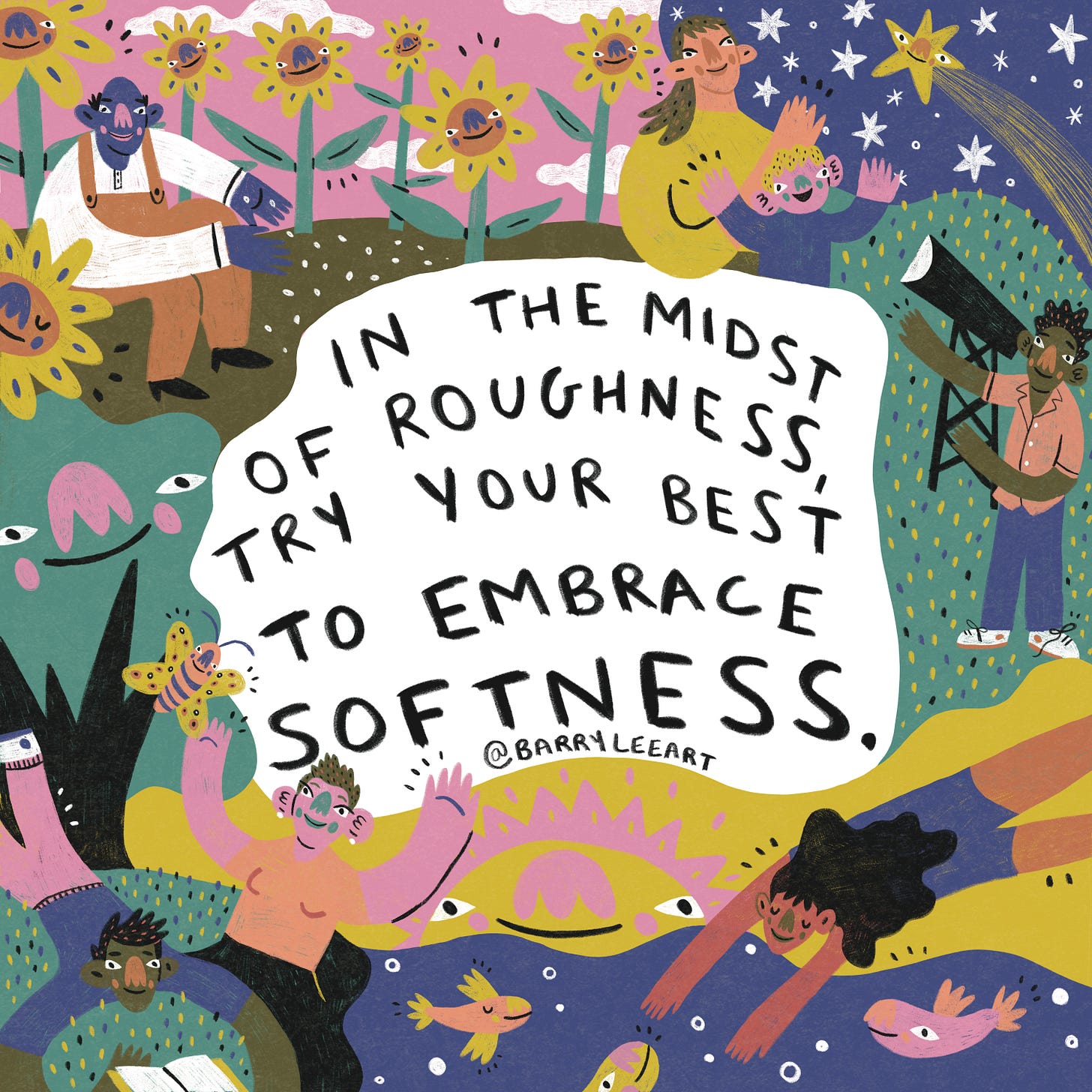
“Try making smaller movements,” my Pilates instructor suggests, as I find my body wanting to speed up in response to the exercise at hand. I take a deep breath and move slower, trying to tune into the muscle that needs attention.
I miss moving freely, how my body contorted while dancing or painting a mural without reactive physical strain. I’ve talked before about the ongoing relationship I have been developing with being more present in my body, and it’s a relationship that will only persist. I’m weaning off of my second COVID infection and having to strip more of my old life away. It can feel tough when your body betrays you. Being Disabled, for me, means being betrayed numerous times by the body you are in and learning to restructure ways to tend to it.
The more present I get in my body, the more pain I feel. Pain from avoiding crucial care my body needs. With the pain comes the need for greater care. I used to think that caring for my body was to mold my body into someone more palatable for society. When I did identify as a binary gender, I’d go to intense workout classes to build muscle, drink chalky protein shakes, and try to grow facial hair. None of these things made me feel comfortable, but I kept drilling in this “no pain, no gain” mentality that is often placed when it comes to performing masculinity. When I started connecting the dots that I am non-binary, it was around the same time I started taking presence in my body seriously. I peeled off layers of these societal pressures I felt to perform, and that peeling still occurs.
In my restructuring, I recently decided to no longer participate in contributing to art shows. After my experience at the art residency in Ohio, having to advocate for masks to be mandatory at the show, it made me really sit with how art institutions are at this moment. It felt like another straw in the experiences I have had these last several years where I would be hired to do things because I am Disabled, but as soon as an access need was being asked to met, there was tension. How a client would ask me to turn in sketches after communicating I was in the ICU. How another client would put me in a dodgy construction zone to paint a mural. Access needs aren’t the majority’s “normal.”
As I settle in to the understanding that the majority’s “normal” was never something I was comfortable with, I wonder why I would return to something that isn’t a place I could feel safe in. I also reckon with the acknowledgment that so much of me never felt safe around other’s ideas of “normal” for most of my life. Since the beginning of the pandemic, many people have been in a rush to “go back to normal” while I was here, creating a new normal, one where I could show up as I am and not as someone I am pressured to be. My “normal” is slowness and softness because those things, for me, cultivate accessibility.
When I leave pilates, my body feels sore—the affirming soreness I felt from high-intensity workouts, which let me know I was tending to my body. However, I leave knowing I still gained something, this time from being softer and slower. There’s strength in softness.




